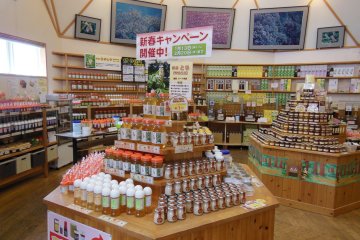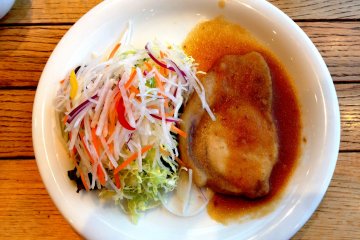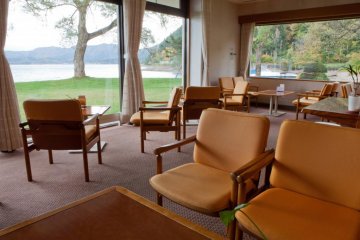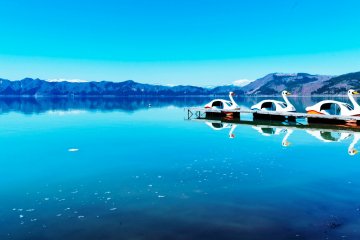Hidden in the snowy mountains of Akita Prefecture, Nyuto Onsen Village feels like something out of a fairytale. This quiet mountain retreat is home to a collection of traditional hot spring inns, some of which have been welcoming guests since Japan’s Edo period (1603–1868). The village lies at the base of Mount Nyuto, within Towada-Hachimantai National Park, at an elevation of roughly 600 meters (1,970 feet). Its high altitude and northern location give it a long, snow-heavy winter season.
Nyuto Onsen Village also consistently ranks among Japan’s most beloved hot spring destinations, frequently appearing in online popularity surveys. Among Japanese travelers, it’s often regarded as a “secret hot spring you must visit at least once in your life.” The village’s signature milky white water perfectly captures the timeless, almost mystical image many hold of Nyuto.
A Soak in History

A cluster of seven hot spring inns scattered through the forest, this “onsenkyo” (hot spring village) has been welcoming guests for centuries. For Japanese travelers, it’s a dream destination. For international visitors, it’s still a well-kept secret. Here’s a closer look at the seven inns that make Nyuto Onsen Village so unforgettable.
Tsurunoyu Onsen

Tsurunoyu Onsen is the oldest inn in Nyuto Onsen Village. Originally a retreat for feudal lords during the Edo period, it retains its historic charm with thatched-roof buildings, lantern-lit hallways, and serene open-air baths set against the snow. Its mineral-rich waters, which contain a mix of sulfur, sodium, and calcium chloride, are said to ease hypertension, arteriosclerosis, rheumatism, skin conditions, and diabetes.
Tsurunoyu Onsen also offers a beloved local specialty—yamanoimo nabe (mountain yam hot pot), served exclusively to overnight guests. This hearty, steaming dish, enjoyed beside a traditional sunken hearth, is especially satisfying after a long soak in the snow-covered onsen.
Day-trippers are welcome between 10:00 and 15:00 for ¥700, although the famed outdoor bath is not accessible to non-overnight guests on Mondays.

Tae no Yu Onsen
Tae No Yu Onsen brings a modern sensibility to traditional onsen style, with warm wooden interiors and scenic, outdoor bathing areas. Located along a mountain stream, it features separate men’s and women’s baths as well as private options. The inn’s springs, a combination of calcium-magnesium sulfate and simple spring water, are beneficial for arteriosclerosis, skin problems, and digestive disorders.
Day-use is available from 10:30 to 15:00 (last entry 14:00) for ¥1,000, except on Tuesdays when it is closed for cleaning.

Kuroyu Onsen
Kuroyu Onsen, which means “black hot spring,” is one of the most rustic and nature-immersed inns in Nyuto Onsen Village. It draws from a simple sulfur spring with hydrogen sulfide properties, said to help treat high blood pressure, arteriosclerosis, circulatory issues, and diabetes.
One of its most charming traditions involves boiling fresh eggs in the onsen’s spring source. After soaking in the mineral-rich water, the eggs turn black on the outside due to sulfuric reactions but remain perfectly cooked and white inside. These “black eggs” are said to have antibacterial properties.
The day bathing facility is open from 9:00 to 16:30 (last entry at 16:00) for ¥800, with shortened hours on Wednesdays (until 11:00 only). Seasonal closure, however, is something to keep in mind. The onsen is typically closed from November to mid-April, with the reopening date subject to snowfall and snowmelt conditions.
Ganiba Onsen

Ganiba Onsen, established in 1846, takes its name from freshwater crabs (gani) found in the river beside its open-air baths. The inn draws from two different hot spring sources, including a sodium bicarbonate carbonic acid hydrogen spring said to help with diabetes and various skin conditions. The outdoor bath, set about 50 meters into untouched forest, offers guests a peaceful soak surrounded by the shifting seasons—vibrant greens in spring, deep reds in autumn, and pure white silence in winter.
Ganiba accepts day visitors from 9:00 to 16:00 for a fee of ¥800, but is closed on Wednesdays.
Magoroku Onsen
Magoroku Onsen, named after its founder, is a charming, traditional ryokan made up of black wooden buildings clustered around natural hot spring sources. Often referred to as the “mountain water of medicine,” its radium mineral spring is believed to help with gastrointestinal issues, wounds, and skin conditions such as nettle rash. A large bridge over a clear mountain stream leads to the inn, where stone walls and river views create a peaceful, scenic approach. The baths, including a large outdoor tub exclusively for women, are set just above the river, offering a rustic and healing atmosphere.
Day-use bathing is available for ¥700. Bathing hours are from 10:00 to 14:30, with guests asked to exit by 15:00. The facility is closed on Fridays.
Ogama Onsen
Ogama Onsen is a one-of-a-kind ryokan housed in a reconstructed wooden school building on a steep mountain slope. Gama (large toad) statues greet visitors at the entrance, and remnants of the old high school, like long hallways and classroom-turned baths, create a nostalgic, old Japan atmosphere. The onsen’s acidic arsenic sodium chloride sulfuric spring is said to help with rheumatic conditions and athlete’s foot.

Kyukamura Nyuto Onsenkyo
Kyukamura Nyuto Onsenkyo is the most modern inn in Nyuto Onsen Village. Originally built by the government to promote health and tourism, it now operates as a contemporary ryokan with 38 rooms in both Western and Japanese styles. Known for its accessibility and amenities, including an elevator and tennis courts, it’s a popular choice for families, groups, and events. The baths draw from simple sulfur and sodium bicarbonate springs, effective for high blood pressure and arteriosclerosis.
Day-use bathing is available for ¥800 from 11:00 to 15:00, or until 17:00 for Yumeguri-cho pass holders.
Getting to Nyuto Onsen Village
Reaching this fairytale-like winter retreat is easier than you might expect, despite its remote and untouched setting. From Tokyo, take the Akita Shinkansen to Tazawako Station, a scenic journey of just under three hours. From there, a local bus (Ugo Kotsu Nyuto Line) or reservation-based shuttle like the Akita Airport Liner can take you directly into the onsen village. If you're flying, Akita Airport is the nearest hub, with easy rail or bus connections to Tazawako. Winter visitors should check road and bus conditions in advance, as snowfall can affect local transit schedules.













